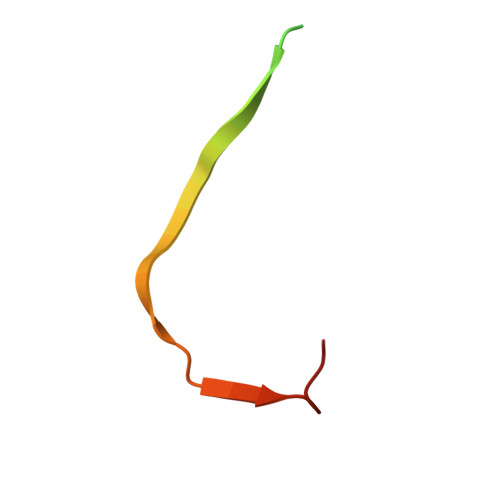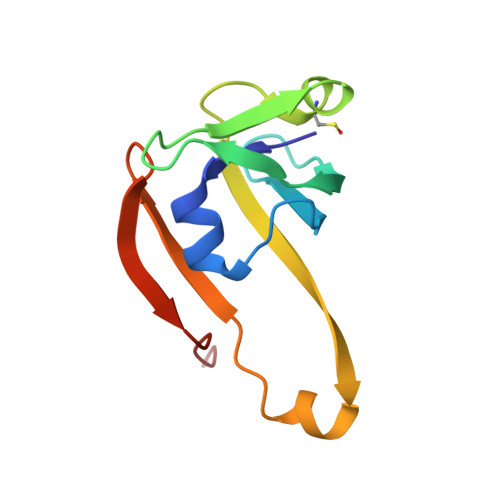The Mechanism of Regulation of Pantothenate Biosynthesis by the PanD-PanZAcCoA Complex Reveals an Additional Mode of Action for the Antimetabolite N-Pentyl Pantothenamide (N5-Pan).
Arnott, Z.L.P., Nozaki, S., Monteiro, D.C.F., Morgan, H.E., Pearson, A.R., Niki, H., Webb, M.E.(2017) Biochemistry 56: 4931-4939
- PubMed: 28832133
- DOI: https://doi.org/10.1021/acs.biochem.7b00509
- Primary Citation of Related Structures:
5LS7 - PubMed Abstract:
The antimetabolite pentyl pantothenamide has broad spectrum antibiotic activity but exhibits enhanced activity against Escherichia coli. The PanDZ complex has been proposed to regulate the pantothenate biosynthetic pathway in E. coli by limiting the supply of ¦Â-alanine in response to coenzyme A concentration. We show that formation of such a complex between activated aspartate decarboxylase (PanD) and PanZ leads to sequestration of the pyruvoyl cofactor as a ketone hydrate and demonstrate that both PanZ overexpression-linked ¦Â-alanine auxotrophy and pentyl pantothenamide toxicity are due to formation of this complex. This both demonstrates that the PanDZ complex regulates pantothenate biosynthesis in a cellular context and validates the complex as a target for antibiotic development.
Organizational Affiliation:
Astbury Centre for Structural Molecular Biology and School of Chemistry, University of Leeds , Leeds LS2 9JT, U.K.
























